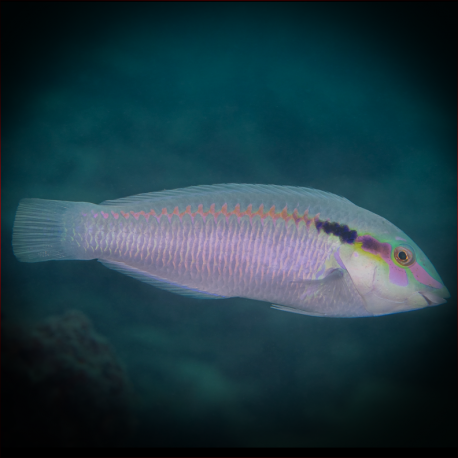More info
Datasheet
| Minimum Tank Size | 600 litres / 158.50 US gallons |
| Maximum Size | 20.0cm / 7.87inches |
| Reef Compatible | Reef safe with caution |
| Temperament | Mostly peaceful but might be aggressive towards similar species |
| Temperature | 22.2°C / 71.96°F - 25.6°C / 78.08°F |
| Specific Gravity | 1.020-1.025 |
| Carbonate Hardness | 8-12 |
| pH | 8.1-8.4 |
General Description
The Zigzag wrasse, scientifically known as Halichoeres scapularis, belongs to the Labridae family and is widely recognized for its attractiveness and effectiveness in eradicating flatworms and pyramid snails in aquarium settings. These fish, native to the Indo-West Pacific region spanning from the Red Sea and East Africa to Papua New Guinea, Japan, and south to the Great Barrier Reef in Australia, exhibit a distinguishing zigzag pattern on their bodies.
Aquarium Suitability
Considered suitable for aquariums with proper care, Zigzag wrasses are valued for their ability to combat unwanted invertebrates. Despite their peaceful nature compared to some other wrasse species, they can grow relatively large, making them better suited for larger tank setups of at least 600 liters.
Demands, Care, and Hardiness
Known for their hardiness, Zigzag wrasses require a deep sandy substrate of at least 2 inches in the aquarium to facilitate their burrowing behavior when feeling threatened or sleeping. These wrasses should be kept in pairs (one male and one female) or one male with multiple females for optimal functioning. Additionally, they are sensitive during transportation and acclimatization into the aquarium, requiring careful handling to prevent injuries around the mouth area.
Reef Suitability
Categorized as reef-safe with caution, Zigzag wrasses may exhibit aggressiveness towards similar species and pose a threat to small fish, crustaceans, and tubeworms typically found in reef environments.
Aquarium Setup
To create a suitable habitat for Zigzag wrasses, it is essential to provide a tank with the specified water conditions of a pH range of 8.1-8.4, a temperature between 22.2-25.6°C, a specific gravity of 1.020-1.025, and a carbonate hardness (KH) of 8-12. The setup should include adequate hiding spots, rocks, and substrate to accommodate their digging behavior.
Behaviour
These wrasses are known to exhibit interesting personalities, with the tendency to rearrange rocks and corals in search of food. They can also jump out of open aquariums and bury themselves in the sand when feeling threatened or needing to sleep.
Feeding and Diet
Zigzag wrasses have a diverse diet that includes consuming larger crustaceans, other invertebrates, small crustaceans like krill and mysis, and zooplankton such as cyclops and pods. They are particularly effective at feeding on flatworms and pyramid snails.
Dimorphism and Habitat
Zigzag wrasses have the ability to change gender from female to male, with females transitioning when a male presence is required. Their natural habitat ranges from the Red Sea and East Africa to the waters of Papua New Guinea, Japan, and the Great Barrier Reef in Australia.

